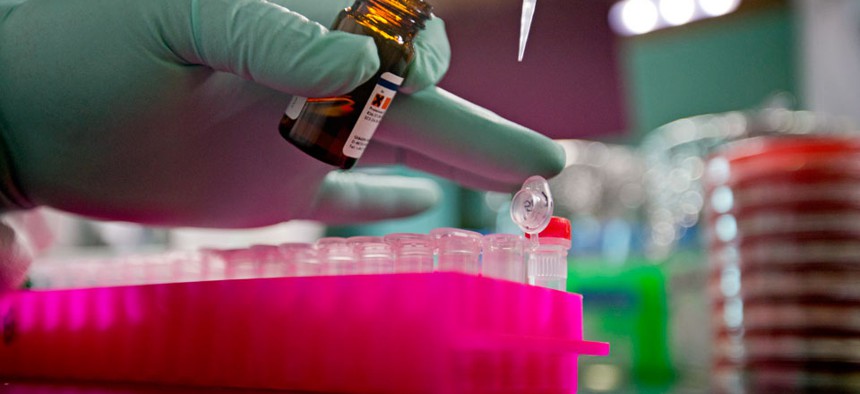Citing Anthrax and Smallpox Scares, White House Tells Federal Labs to Take Stock

A laboratory at the federal Centers for Disease Control and Prevention David Goldman/AP
Biosecurity memo urges "safety stand-down."
After recent mishandling of potentially deadly pathogens, the White House is urging all federal laboratories to conduct what it is calling a “safety stand-down,” security and science officials announced Thursday.
Agencies that handle infectious agents or toxins have been asked to complete overviews of their programs within 30 days of a memo dated Aug. 18.
“During the safety stand-down period, leaders will devote significant, dedicated time to review laboratory biosafety and biosecurity best practices and protocols, as well as to develop and implement plans for sustained monitoring,” the White House memo said.
The memo applied to federal facilities as well as extramural facilities that receive federal funding, according to a blog post from Lisa Monaco, homeland security adviser to the president, and Dr. John Holdren, who directs the White House Office of Science and Technology Policy
In the longer term, officials are setting up federal and nonfederal committees to review “government’s biosafety and biosecurity practices and oversight system for federally funded activities,” Monaco and Holdren said.
The blog mentioned the Ebola outbreak in West Africa as an example of a naturally arising infectious disease federal scientists must confront and the anthrax attacks of 2001 as an example of pathogens deliberately released to cause harm.
The Centers for Disease Control and Prevention earlier this summer said potentially viable anthrax samples were transferred to an insufficiently secure laboratory after they were prematurely declared sterile. Around the same time, decades-old smallpox samples were found in the cold storage area of Food and Drug Administration labs at the National Institutes of Health.
CDC spokesman Benjamin N. Haynes told Nextgov on Thursday his agency “is going far beyond the actions in the memo.”
For instance, CDC Director Thomas Frieden in July put a moratorium on transferring biological material out of the agency’s most biosecure labs that would only be lifted on a lab-by-lab basis after thorough reviews.
“CDC is already in the process of conducting the sweep and should be completed by Sept. 30,” Haynes said. “Any high consequence pathogens or select agents found will be reported through the normal channels. To date, no CDC labs have found anything that requires reporting.”






